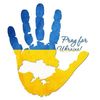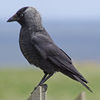Help needed with strawberry moon shots
Jun 22, 2016 15:00:30 #
PVR8 wrote:
I didn't adjust shutter speed, but I did adjust ISO and got the same results. Since the 16-300 lens has variable aperture it automatically sets aperture even in manual mode. I still have a lot to learn and I'm very grateful for this forum because MOST of the folks here are very helpful.
When your camera is in manual mode, you set the shutter speed and the aperture. The aperture is wide open until you trip the shutter, and tthen the camera sets the aperture, to what ever you selected, during the exposure. The camera sets the aperture to what ever you told it to set it to... You are in full control of shutter speed, aperture and ISO - period.
Jun 22, 2016 15:10:35 #
PVR8 wrote:
Thanks Dman, I'm going to try again with the next full moon. I may be mistaken but it seems that the lens automatically adjusts the aperture even when I'm in manual mode.
Nothing should adjust automatically when you are in manual mode. If you are in "M" mode you have to make all of the adjustments. I this particular shot if you had just sped up your SS to at least 1/320 you probably would have seen the detail you were after.
Jun 22, 2016 15:12:27 #
Leitz
Loc: Solms
PVR8 wrote:
...it seems that the lens automatically adjusts the aperture even when I'm in manual mode.
In manual mode, the only way the aperture should change is when you zoom.
Jun 22, 2016 15:21:13 #
I just checked a few of the only Moon shots I ever took with my 7100 at 600mm and the settings were around....200 to 250SS/ISO200/f11 and 360SS/ISO200/f8. These settings may be a good place to start but, perhaps at ISO100, then adjust shutter speed. If you want to maintain your f6.3 you will need a shorter SS. I do tend to expose to the right slightly and shoot in raw though.
As others have suggested, go to manual and take control.......
As others have suggested, go to manual and take control.......

Jun 22, 2016 17:25:24 #
Thanks again to everyone for your feedback. I am going to try these suggestions until I get the desired results. When I do, I will post the pic.
Jun 23, 2016 06:19:24 #
jim quist wrote:
you need less light on your subject. Keep the ISO as low as you can. bump up your f-stop as high as you can. then set your shutter at 1/300. your lens is 300, so the lowest to go is 1/300. I know that general rule is for handheld, but start there. if it is too dark go to a lower f-stop. if it is too bright go to a faster shutter speed.



Jun 23, 2016 08:22:39 #
Jun 23, 2016 09:17:10 #
photocat wrote:
Try ISO 200 shutter speed at 250 fstop 5.6 , 8,or 11. Basically sunny 16 rule. Depending on your location one of those stops will give you the detail your looking for
Start with the Sunny 16 rule and make small adjustments from that point. The moon is the brightest thing in the sky, so treat it that way with camera settings.
Jun 23, 2016 09:34:00 #
Mark7829
Loc: Calfornia
PVR8 wrote:
I tried to get some shots of the strawberry moon o... (show quote)
Monday was the wrong day. The day before the full moon is when photographers shoot. It is lower in the sky and closer to the horizon. Is is not as dark as it was on Monday and you can get good detail provided of course you shoot manual as others have mentioned. One other thing, you need a bigger lens. I know you think 300 works but you need even bigger.
Good Shooting


Jun 23, 2016 09:52:36 #
I'm always puzzled that most people use small apertures when shooting the moon. Depth of field is irrelevant, for a 600mm lens or shorter it's central, so sharpness isn't a problem for a halfway decent lens. F7.1, ISO400, 1/2000s seems to work quite well.
Jun 23, 2016 14:03:19 #
I agree with all the above... I have been taking moon shots at various phases and found the following - using a 16-300 Tamron like you with a Nikon 5200 on a tripod. I find that depending on cloud cover and atmospheric conditions (I am in the Los Angeles area!) the following seems to work best.
I shoot a series on Manual with ISO of either 100 or 200. I start with an fstop of f/11 and a shutter speed of 1/80, changing to 1/160, 1/320, and even at 1/640 of a sec refocusing and reframing after each shot (The Moon moves!) I then change to f/16 and use the same shutter speeds (although) I find the 1/640 too fast. At f/16 I will go to 1/40 and even 1/20 of a second, again depending on the conditions. However, the slower shutter speeds are conducive to motion blur - either of the camera or maybe the moon itself. On the few clear days, it seems that the shutter speeds around 1/160 are best. I also find that focus can become a problem and needs to checked before each shot. So depending on conditions, I will end up with 8-15 shots hopefully most in good focus!
Also, I have found that the best definition for a 300 mm lens comes in the early phases of the moon (1/4 or half) rather than a the full moon. You can get good crater definition for the larger craters on the shadow line but a good portion of the image will be lacking in detail. This is especially true with the full moon where all you will get is the shades of gray. If you want more detail, you will need a longer focal length - 400 and above. But that means $$$ which I am unwilling to spend. Good luck on your efforts - I have had great fun doing this and continue in the hopes of getting that really fantastic shot with limited equipment I have!
I shoot a series on Manual with ISO of either 100 or 200. I start with an fstop of f/11 and a shutter speed of 1/80, changing to 1/160, 1/320, and even at 1/640 of a sec refocusing and reframing after each shot (The Moon moves!) I then change to f/16 and use the same shutter speeds (although) I find the 1/640 too fast. At f/16 I will go to 1/40 and even 1/20 of a second, again depending on the conditions. However, the slower shutter speeds are conducive to motion blur - either of the camera or maybe the moon itself. On the few clear days, it seems that the shutter speeds around 1/160 are best. I also find that focus can become a problem and needs to checked before each shot. So depending on conditions, I will end up with 8-15 shots hopefully most in good focus!
Also, I have found that the best definition for a 300 mm lens comes in the early phases of the moon (1/4 or half) rather than a the full moon. You can get good crater definition for the larger craters on the shadow line but a good portion of the image will be lacking in detail. This is especially true with the full moon where all you will get is the shades of gray. If you want more detail, you will need a longer focal length - 400 and above. But that means $$$ which I am unwilling to spend. Good luck on your efforts - I have had great fun doing this and continue in the hopes of getting that really fantastic shot with limited equipment I have!
Jun 23, 2016 15:19:28 #
Thanks for the tips. It seems that our situations are similar. I am also unwilling to fork over a large sum of money for a lens that will reach 400mm and beyond. I will have to do the best I can with the equipment that I'm using. With some trial and error I think we can get that great high definition moon shot that we're going for. Good luck & thanks again.
bfur396 wrote:
I agree with all the above... I have been taking m... (show quote)
Jun 23, 2016 15:24:56 #
Thanks for another combo that I will try. I am not in position to buy a 600mm lens right now so I will have to work with 16- 300mm and get the best shot possible within that range.
Jackdoor wrote:
I'm always puzzled that most people use small apertures when shooting the moon. Depth of field is irrelevant, for a 600mm lens or shorter it's central, so sharpness isn't a problem for a halfway decent lens. F7.1, ISO400, 1/2000s seems to work quite well.
Jun 23, 2016 20:46:13 #
Szalajj
Loc: Salem, NH
I went out and shot about 8 hours before they said that the moon would be full, and before I knew it was a Strawberry Moon.
Here are the settings I used with my Canon Rebel T5, and the Canon 100-400 Mark II lens, the shots were taken using a tripod, and manual focus. I used the back focus button on the last one.
Moon 8487 – f 14 1/50 ISO 100
Moon 8520 – f 15 1/50 ISO 100
Moon 8523 – f 16 1/16 ISO 100
Moon 8525 – f 16 1/30 ISO 100
Would you like me to post one of the shots for comparison?
Here are the settings I used with my Canon Rebel T5, and the Canon 100-400 Mark II lens, the shots were taken using a tripod, and manual focus. I used the back focus button on the last one.
Moon 8487 – f 14 1/50 ISO 100
Moon 8520 – f 15 1/50 ISO 100
Moon 8523 – f 16 1/16 ISO 100
Moon 8525 – f 16 1/30 ISO 100
Would you like me to post one of the shots for comparison?
Jun 23, 2016 22:03:59 #
Szalajj
Loc: Salem, NH
I just wanted to add that my shots were moon rise shots near sunset, they were not shot after dark, so the settings are vastly different from those that others are suggesting.
But the important thing you want to remember is that you need a smaller aperture opening, or higher f-stop number to bring out the detail of the moon craters. And, switch to manual rear screen focusing if your camera is capable of it.
But the important thing you want to remember is that you need a smaller aperture opening, or higher f-stop number to bring out the detail of the moon craters. And, switch to manual rear screen focusing if your camera is capable of it.
If you want to reply, then register here. Registration is free and your account is created instantly, so you can post right away.







